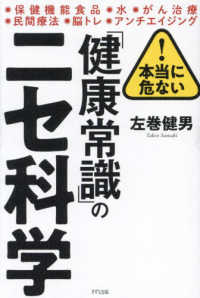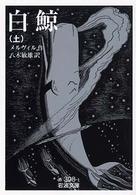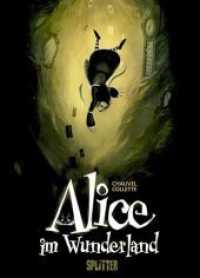- ホーム
- > 洋書
- > 英文書
- > Cinema / Film
Full Description
James Naremore's study of Max Ophuls' classic 1948 melodrama, Letter from an Unknown Woman, not only pays tribute to Ophuls but also discusses the backgrounds and typical styles of the film's many contributors--among them Viennese author Stephan Zweig, whose 1922 novella was the source of the picture; producer John Houseman, an ally of Ophuls who nevertheless made questionable changes to what Ophuls had shot; screenwriter Howard Koch; music composer Daniéle Amfitheatrof; designers Alexander Golitzen and Travis Banton; and leading actors Joan Fontaine and Louis Jourdan, whose performances were central to the film's emotional effect.
Naremore also traces the film's reception history, from its middling box office success and mixed early reviews, exploring why it has been a work of exceptional interest to subsequent generations of both aesthetic critics and feminist theorists.
Lastly, Naremore provides an in-depth critical appreciation of the film, offering nuanced appreciation of specific details of mise-en-scene, camera movement, design, sound, and performances, integrating this close analyses into an overarching analysis of Letter's "recognition plot;" a trope in which the recognition of a character's identity creates dramatic intensity or crisis. Naremore argues that Letter's use of recognition is one of the most powerful in Hollywood cinema, and contrasts it with what we find in Zweig's novella.
Contents
1. Acknowledgements
2. Introduction
3. Production
4. Reception
5. Critical Appreciation
6. Notes
7. Credits
8. Bibliography








